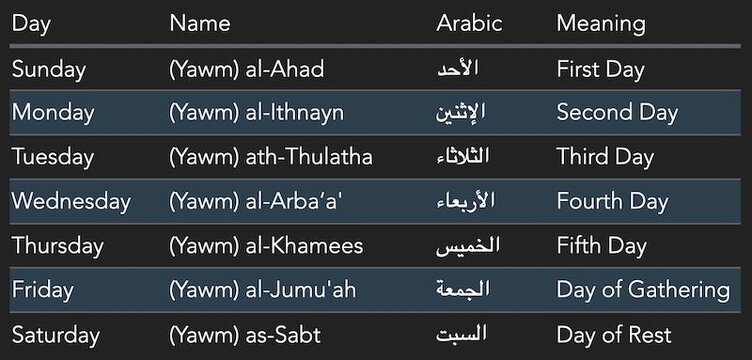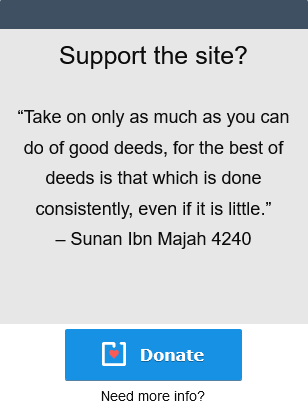11-03-2024
5,166
218
289

Islamic Calendar 2025 – Hijri Calendar 1446/1447
Muslims around the world use the Islamic Calendar (also known as the Lunar or Hijri calendar) to determine the dates of religious events and observances.
This Hijri calendar is based on 12 lunar months – a new month begins when a new moon is sighted.
Muslims around the world use the Islamic calendar to determine the dates of religious events and observances. It is also known as the Hijri calendar or the Muslim calendar.
The Hijri calendar is not to be confused with the Solar Hijri calendar used in Iran and Afghanistan.
Tied to the Moon Phases
The Islamic calendar is a lunar calendar whose time reckoning is tied to the Moon phases. Each month lasts for a full lunation, which is the time span from one New Moon to the next. This Moon cycle encompasses all the phases of the Moon.
The timing of the months in the Islamic calendar is based on astronomical observation. A new month can only begin after a Waxing Crescent Moon is observed shortly after sunset. The Waxing Crescent Moon is the Moon phase which starts right after a New Moon.
Detached from the Solar Year
Unlike other calendar systems that use leap days or leap months to synchronize the calendar with the solar year, the Islamic calendar is completely detached from astronomical seasons, which are marked by the equinoxes and solstices. An Islamic year consistently falls about 11 days short of the solar year.
Calendar types: solar, lunar, lunisolar
For that reason, the Islamic calendar cannot be used for agriculture or other activities traditionally linked to the seasons, and most Muslim countries officially use the Gregorian calendar as their civil calendar alongside the Hijri system.
How accurate are different calendar systems?
Difficult to Predict
The traditional version of the Islamic calendar requires an authorized person or committee to make an actual sighting of the Crescent Moon to determine the length of each month.
This dependence on astronomical observations makes it difficult to predict the length of Islamic months. Clouds and other adverse atmospheric conditions can obscure an otherwise visible Crescent Moon. When this happens, the month may be extended by a day, delaying both the beginning of the new month and the events associated with it. This is why the dates for Muslim holidays may change at short notice.
Modern Modified Versions
Some countries and Muslim communities now use modified versions of the traditional calendar that are designed to make the timing of Islamic months and observances easier to predict.
A new month may also begin on different days in different countries. Because the time of the moonset at a location depends on its longitude, a new month and key religious rituals like the Ramadan fast may begin a day earlier in, for example, West African Muslim countries than in Indonesia or Malaysia.
Calendar Structure
The Islamic calendar has 12 months with 29 or 30 days. If the Crescent Moon is visible shortly after sunset on the evening of day 29, the following day is the first day of the new month. If no sighting is made, a 30th day is added to the current month, which is then followed by the first day of the subsequent month.
The months of Rajab, Dhū al-Qa‘dah, Dhu al-Ḥijjah, and Muḥarram are considered sacred.
When Was Year 1?
Like the Persian calendar, Islamic time reckoning begins in 622 CE when the Muslim prophet Muhammad migrated to Medina. This event is referred to as Hegira or Hijrah, accounting for the name Hijri calendar.
In parallel with the letters AD (Anno Domini) used in the Christian calendar, years in the Islamic calendar are designated either H for Hijrah or AH, which stands for the Latin term Anno Hegirae.
The Persian and Islamic calendar systems are otherwise unrelated. The former is a solar calendar, so its year count differs substantially from that of the Islamic lunar calendar. For example, January 1, 2025 falls in the year 1446 AH in the Lunar Hijri calendar, which corresponds to year 1403 in the Solar Hijri calendar.
Leap Year Rules
The Islamic calendar year is not designed to match up with the length of a solar year, so it does not feature a correction mechanism like leap days in the Gregorian calendar to make up for the deviation. For each year that passes, Islamic dates fall on earlier dates in the Gregorian calendar. It takes 33 years until the Hijri year has cycled through a full Gregorian year and a given Islamic date again falls on the same Gregorian date.
Since the Islamic calendar years are shorter than Gregorian years and the current year number is lower, the two calendar systems will one day show the same year number. However, this will take some time: the year numbers will coincide on May 1, 20874 CE/AH.
Rule-Based Version
To make Islamic time reckoning more predictable and universal, Muslim scholars developed the Tabular Islamic calendar in the 8th century CE. This system uses arithmetical rules to determine the length of each month and inserts leap days on a regular basis.
History and Background
The modern Hijri calendar is based on and uses the same month names as the pre-Islamic calendar used by the Ancient Arabs. According to some sources, it was a lunisolar calendar where the length of the months followed the Moon phases and a leap month (Nasī’) was regularly inserted to re-align the time reckoning with the solar year. Following the Muslim conquest of Makkah, the leap month was abolished to create a purely lunar calendar.
The Iranian astronomer Al-Biruni (973 – 1048 CE) states that the Caliph Umar (c.583 – 644 CE) introduced the Islamic year count in 638 CE. Pre-Islamic time reckoning did not utilize year numbers as each year was identified by an important event that occurred in it.
Muslims around the world use the Islamic Calendar (also known as the Lunar or Hijri calendar) to determine the dates of religious events and observances.
This Hijri calendar is based on 12 lunar months – a new month begins when a new moon is sighted.
Muslims around the world use the Islamic calendar to determine the dates of religious events and observances. It is also known as the Hijri calendar or the Muslim calendar.
The Hijri calendar is not to be confused with the Solar Hijri calendar used in Iran and Afghanistan.
Tied to the Moon Phases
The Islamic calendar is a lunar calendar whose time reckoning is tied to the Moon phases. Each month lasts for a full lunation, which is the time span from one New Moon to the next. This Moon cycle encompasses all the phases of the Moon.
The timing of the months in the Islamic calendar is based on astronomical observation. A new month can only begin after a Waxing Crescent Moon is observed shortly after sunset. The Waxing Crescent Moon is the Moon phase which starts right after a New Moon.
Detached from the Solar Year
Unlike other calendar systems that use leap days or leap months to synchronize the calendar with the solar year, the Islamic calendar is completely detached from astronomical seasons, which are marked by the equinoxes and solstices. An Islamic year consistently falls about 11 days short of the solar year.
Calendar types: solar, lunar, lunisolar
For that reason, the Islamic calendar cannot be used for agriculture or other activities traditionally linked to the seasons, and most Muslim countries officially use the Gregorian calendar as their civil calendar alongside the Hijri system.
How accurate are different calendar systems?
Difficult to Predict
The traditional version of the Islamic calendar requires an authorized person or committee to make an actual sighting of the Crescent Moon to determine the length of each month.
This dependence on astronomical observations makes it difficult to predict the length of Islamic months. Clouds and other adverse atmospheric conditions can obscure an otherwise visible Crescent Moon. When this happens, the month may be extended by a day, delaying both the beginning of the new month and the events associated with it. This is why the dates for Muslim holidays may change at short notice.
Modern Modified Versions
Some countries and Muslim communities now use modified versions of the traditional calendar that are designed to make the timing of Islamic months and observances easier to predict.
A new month may also begin on different days in different countries. Because the time of the moonset at a location depends on its longitude, a new month and key religious rituals like the Ramadan fast may begin a day earlier in, for example, West African Muslim countries than in Indonesia or Malaysia.
Calendar Structure
The Islamic calendar has 12 months with 29 or 30 days. If the Crescent Moon is visible shortly after sunset on the evening of day 29, the following day is the first day of the new month. If no sighting is made, a 30th day is added to the current month, which is then followed by the first day of the subsequent month.
The months of Rajab, Dhū al-Qa‘dah, Dhu al-Ḥijjah, and Muḥarram are considered sacred.
When Was Year 1?
Like the Persian calendar, Islamic time reckoning begins in 622 CE when the Muslim prophet Muhammad migrated to Medina. This event is referred to as Hegira or Hijrah, accounting for the name Hijri calendar.
In parallel with the letters AD (Anno Domini) used in the Christian calendar, years in the Islamic calendar are designated either H for Hijrah or AH, which stands for the Latin term Anno Hegirae.
The Persian and Islamic calendar systems are otherwise unrelated. The former is a solar calendar, so its year count differs substantially from that of the Islamic lunar calendar. For example, January 1, 2025 falls in the year 1446 AH in the Lunar Hijri calendar, which corresponds to year 1403 in the Solar Hijri calendar.
Leap Year Rules
The Islamic calendar year is not designed to match up with the length of a solar year, so it does not feature a correction mechanism like leap days in the Gregorian calendar to make up for the deviation. For each year that passes, Islamic dates fall on earlier dates in the Gregorian calendar. It takes 33 years until the Hijri year has cycled through a full Gregorian year and a given Islamic date again falls on the same Gregorian date.
Since the Islamic calendar years are shorter than Gregorian years and the current year number is lower, the two calendar systems will one day show the same year number. However, this will take some time: the year numbers will coincide on May 1, 20874 CE/AH.
Rule-Based Version
To make Islamic time reckoning more predictable and universal, Muslim scholars developed the Tabular Islamic calendar in the 8th century CE. This system uses arithmetical rules to determine the length of each month and inserts leap days on a regular basis.
History and Background
The modern Hijri calendar is based on and uses the same month names as the pre-Islamic calendar used by the Ancient Arabs. According to some sources, it was a lunisolar calendar where the length of the months followed the Moon phases and a leap month (Nasī’) was regularly inserted to re-align the time reckoning with the solar year. Following the Muslim conquest of Makkah, the leap month was abolished to create a purely lunar calendar.
The Iranian astronomer Al-Biruni (973 – 1048 CE) states that the Caliph Umar (c.583 – 644 CE) introduced the Islamic year count in 638 CE. Pre-Islamic time reckoning did not utilize year numbers as each year was identified by an important event that occurred in it.





